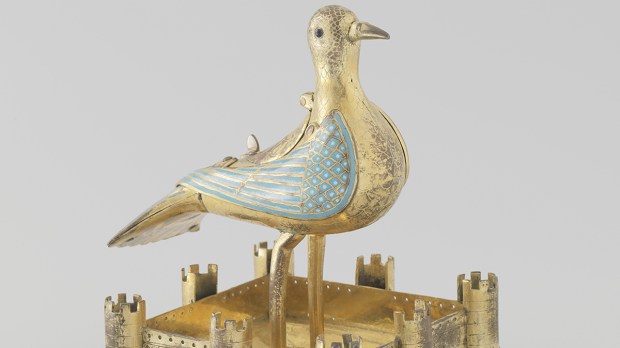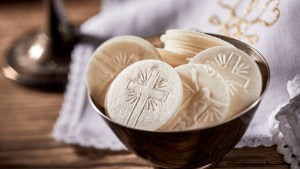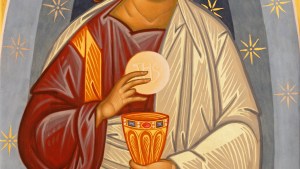As early Christians built their own churches and were no longer under persecution, they began to find creative ways to reserve the consecrated hosts from Mass.
The main purpose of reserving Eucharistic hosts at this time in Church history was to distribute these later to the sick and homebound. As a result, they did not need large tabernacles, but only small receptacles.
One of the more popular receptacles was a box in the shape of a dove.
In the late 19th-century book Notitia eucharistica, the author traces the roots of this custom to the 5th century.
The notice of this occurs in the will of Perpetuus of Tours, made in 471, in which he bequeathed to Amalarius the Presbyter, a Peristerium and a silver Dove for a repository. The Peristerium takes its name from a Greek signifying dove, and is supposed to be the canopy which the Eucharistic Dove was placed … So in the old Customs of Clugny we read of a Dove that always hung over the Altar and contained the Viaticum for the Sick.
Since the very beginning of Christianity the dove symbolizedthe Holy Spirit, and it was a fitting symbol for the receptacle of the consecrated hosts. The dove recalls the calling down of the Holy Spirit by the priest at Mass before the consecration, as it is written in current Eucharistic Prayer II.
Make holy, therefore, these gifts, we pray, by sending down your Spirit upon them like the dewfall, so that they may become for us the Body + and Blood of our Lord, Jesus Christ.
This custom of preserving the Eucharist in a dove-shaped box continued for many centuries, possibly up until the 11th or 12th century. At that time eucharistic devotion was increasing and larger, more ornate boxes began to be constructed.



